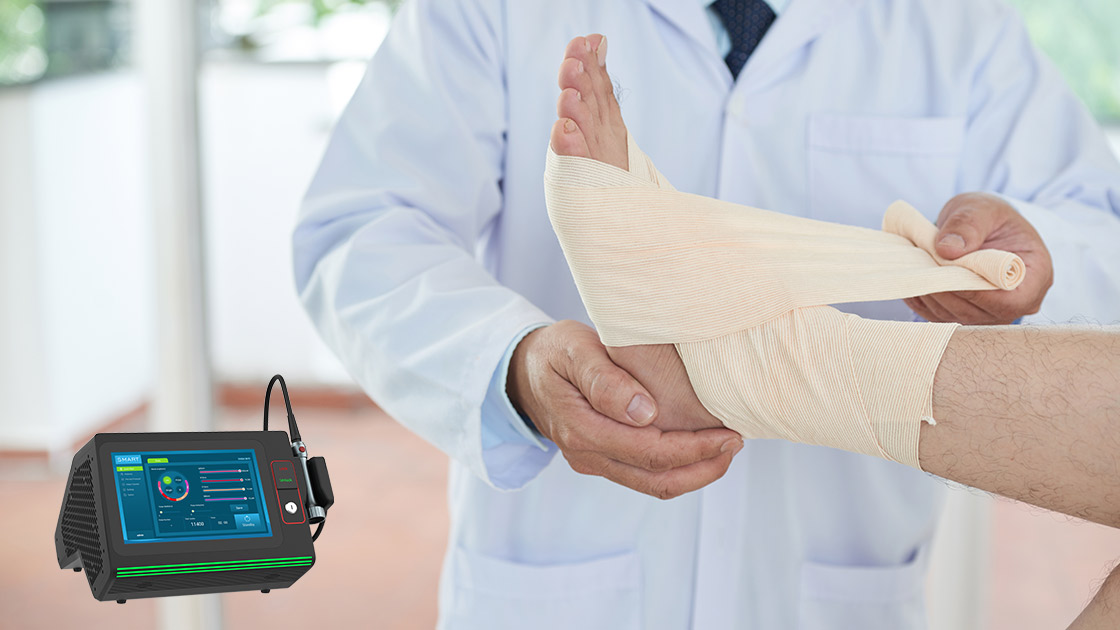Page Contents
High-power laser treatment has emerged as a promising therapeutic modality for managing pain and enhancing wound healing. This non-invasive technique utilizes focused light energy to stimulate cellular activity, providing relief from various types of pain and accelerating tissue repair. In this article, we will explore the mechanisms of action, clinical applications, treatment protocols, and safety considerations associated with high-power laser therapy.
Mechanism of Action of Laser Treatment
High-power lasers operate by emitting concentrated light energy that penetrates deep into tissues. This energy is absorbed by cellular components, triggering a series of biochemical reactions known as photobiomodulation. The primary effects of this process include the reduction of inflammation, stimulation of endorphin release, and enhancement of blood circulation.
For pain relief, high-power lasers reduce inflammation by decreasing the production of pro-inflammatory cytokines and increasing the release of anti-inflammatory mediators. This results in reduced swelling and pain. Additionally, the laser stimulates the release of endorphins, the body’s natural painkillers, providing further analgesic effects. Improved blood circulation aids in the removal of metabolic waste products and delivers more oxygen and nutrients to the affected area, promoting faster healing and pain relief.
In terms of wound healing, high-power laser therapy accelerates tissue repair by promoting collagen production and cellular regeneration. The increased collagen production strengthens the wound area, while cellular regeneration ensures that new, healthy cells replace damaged ones. The anti-bacterial effects of laser therapy also help in reducing the risk of infection, which is crucial for the healing of chronic wounds.
Clinical Applications of Laser Treatment
High-power laser therapy is used to treat a variety of pain conditions and wounds. It is effective for managing chronic pain conditions such as arthritis and neuropathy, as well as acute pain from sports injuries and postoperative recovery. Clinical studies have demonstrated significant pain reduction and improved functionality in patients undergoing laser therapy.
For wound treatment, high-power lasers are beneficial for both acute and chronic wounds. Acute wounds, including surgical incisions and abrasions, heal faster with laser therapy due to enhanced tissue repair mechanisms. Chronic wounds, such as diabetic ulcers and pressure sores, which often have prolonged healing times, also show marked improvement with laser treatment.
Case studies and clinical trials provide strong evidence supporting the efficacy of high-power laser therapy. Patients report reduced pain levels, quicker healing times, and overall better quality of life. These outcomes highlight the potential of laser therapy as a versatile tool in pain management and wound care.
Treatment Protocols
The success of high-power laser therapy depends on a well-planned treatment protocol. Initially, a thorough assessment and diagnosis are conducted to customize the treatment plan to the patient’s specific needs. This personalized approach ensures that the therapy targets the exact areas requiring attention.
Treatment sessions typically last between 5 to 20 minutes, depending on the condition’s severity and the area being treated. The frequency of sessions can vary, but a common regimen includes treatments two to three times per week. The total number of sessions needed ranges from six to twelve, but this can be adjusted based on the patient’s response and progress.
High-power laser therapy can be combined with other treatments for optimal results. Integrating physical therapy, medications, or other therapeutic modalities can enhance the overall effectiveness of the treatment, providing a comprehensive approach to pain relief and wound healing.
Safety and Considerations
High-power laser therapy is generally safe, but it is essential to consider potential side effects and patient-specific factors. Common side effects include temporary redness and discomfort at the treatment site. These are usually mild and resolve quickly. Rare complications can occur but are typically mitigated by proper technique and equipment use.
Selecting suitable candidates for laser therapy involves assessing their medical history and current health status. Contraindications include active cancer, certain skin conditions, and pregnancy. Ensuring that patients meet the criteria for treatment helps in minimizing risks and maximizing benefits.
The expertise of the provider is crucial in ensuring safe and effective treatment. Choosing certified and experienced practitioners who use high-quality equipment is essential. Evaluating the clinic’s reputation and safety standards further ensures that patients receive the best care possible.
Conclusion
High-power laser treatment offers significant benefits for pain relief and wound healing through its advanced mechanisms of action. Its wide range of clinical applications, coupled with well-defined treatment protocols, makes it a valuable tool in modern medicine. By considering safety and patient-specific factors, high-power laser therapy can provide effective and reliable results, improving patients’ quality of life.
